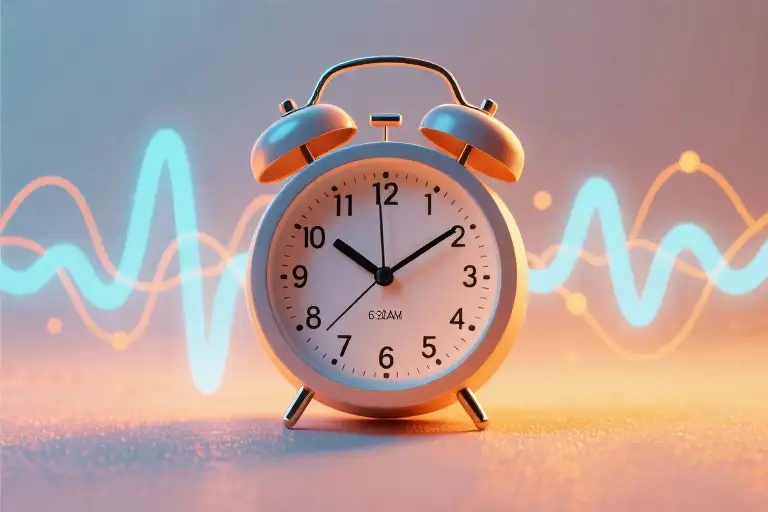The modern executive’s dilemma isn’t a lack of ambition—it’s an abundance of urgent distractions. Research from Harvard Business Review reveals 82% of leaders spend their days trapped in a cycle of ‘urgent but unimportant’ tasks, while McKinsey reports decision fatigue costs businesses 37% of productive work hours. Yet some high-performers navigate identical workloads with remarkable clarity. What’s their secret? Small, strategic habits with compounding returns.
Neuroscience explains why these micro-habits work: when we repeat actions consistently, our basal ganglia automate them, reducing cognitive load. Consider two executives facing identical inboxes. One spends mornings reactively firefighting emails. The other applies the two-minute rule—instantly handling anything requiring <120 seconds. Over six months, this simple habit creates a 14-hour productivity surplus. That’s the power of habit compounding—where daily 1% improvements yield 37x annual gains (1.01³⁶⁵=37.8).
This isn’t another productivity theory list. You’ll find 30 battle-tested habits from top performers—each vetted for immediate implementation. We’ve organized them into actionable frameworks: decision filters that eliminate low-value tasks, time management systems that protect deep work, and energy rituals that sustain peak performance. Bonus resources include downloadable templates (Eisenhower Matrix, habit tracker) and tool recommendations—everything you need to transform chaos into controlled execution.
Key themes you’ll explore:
- The System Mindset: Why reading 10 pages nightly outperforms ‘read 50 books this year’ goals
- Decision Engineering: How the two-minute rule leverages action triggers to defeat procrastination
- Priority Architecture: An adapted Eisenhower Matrix for executive-level task triage
These high performance habits require no dramatic overhauls—just consistent application of small wins. Whether you’re a startup founder drowning in operational details or a corporate leader facing strategic overload, this playbook helps you reclaim focus. The first habit starts tomorrow—let’s begin where all meaningful change does: with understanding why tiny adjustments create disproportionate results.
Core Philosophy: How Small Habits Reshape Work Efficiency
You’ve likely experienced those days where your calendar is packed, your inbox is overflowing, yet by evening you’re left wondering what meaningful work you actually accomplished. The secret to breaking this cycle isn’t found in grand overhauls or herculean efforts, but in the quiet power of small, strategic habits that compound over time.
The Math Behind Habit Compound Effect
Consider this neurological truth: every repeated action strengthens neural pathways, making future execution easier. It’s why brushing your teeth requires zero willpower today, though it once demanded toddler-level concentration. This same principle applies to high performance habits.
Visualize the 1% daily improvement rule:
1.01^365 = 37.78
0.99^365 = 0.03A mere 1% better decision-making each day leads to 37x annual growth, while 1% poorer choices nearly zeros out progress. When McKinsey analyzed executive productivity, they found top performers didn’t work longer hours—they consistently applied micro-habits like:
- Spending the first 15 minutes planning (not reacting)
- Batch-processing emails 3x/day
- Delegating using the “could someone else do this 80% as well?” filter
Systems Beat Goals Every Time
Goals are destinations; systems are the GPS that gets you there automatically. Consider two finance directors:
| Approach | Annual Goal | System | Year-End Result |
|---|---|---|---|
| Goal-Focused | “Read 50 leadership books” | Occasional marathon reading sessions | 12 books (burnout at 15) |
| System-Focused | None | “Read 10 pages with morning coffee” | 42 books (effortlessly) |
The system wins because it:
- Removes decision fatigue (no “should I read today?” debates)
- Leverages existing routines (pairing with established coffee habit)
- Builds momentum (10 pages often becomes 20+)
From Firefighter to Strategist: A CEO’s Story
Sarah, a tech startup CEO, once described her days as “whack-a-mole management.” Her transformation began with three atomic habits:
- The 5-Minute Rule: Any interruption under 5 minutes gets handled immediately (reduced “pending small tasks” by 68%)
- Friday System Audit: 30 minutes weekly reviewing what worked/didn’t in her systems (identified 3 redundant meetings)
- Energy Mapping: Scheduling creative work during her natural peak (10am-12pm), leaving afternoons for meetings
Within six months, her team reported 23% faster decision cycles while Sarah regained 11 weekly hours previously lost to context-switching. The key wasn’t working harder—it was letting habit systems work smarter.
Why This Matters for You
Your brain is wired to seek efficiency. By designing habits that:
- Automate good decisions (like defaulting to the Eisenhower Matrix)
- Exploit natural rhythms (scheduling deep work when willpower is highest)
- Remove friction (prepping tomorrow’s priorities before leaving work)
you’re not just managing time—you’re upgrading your operating system for sustained high performance. The following chapters break down exactly how to install these upgrades.
“We are what we repeatedly do. Excellence, then, is not an act, but a habit.” — Will Durant’s interpretation of Aristotle
This truth remains unchanged through centuries because it works. Your turn to make it work for you.
Decision-Optimizing Habits: 6 Strategies for Clarity Under Pressure
High-performing professionals don’t make better decisions by chance—they build systems that automate clarity. These six research-backed habits will help you cut through decision fatigue and focus on what truly moves the needle.
The Neuroscience Behind the Two-Minute Rule
Your brain’s basal ganglia—the habit control center—activates a powerful “action trigger” when you immediately complete micro-tasks. Here’s how to leverage it:
- Email triage example: When scanning your inbox:
- Reply to simple queries (<2 minutes) immediately
- Flag complex messages for designated “deep work” blocks
- Archive or delete non-essentials (saves 3.1 hours/week according to McKinsey data)
- Meeting follow-ups: Instead of “I’ll send those notes later,” draft the email right after the meeting while context is fresh.
This habit alone helped a Fortune 500 CFO reduce her pending tasks by 37% in three weeks.
Eisenhower Matrix: Your Priority Compass (With Template)
Dwight Eisenhower’s legendary productivity framework separates true priorities from deceptive urgencies:
| Quadrant | Action | Real-World Application |
|---|---|---|
| Urgent/Important | Do now | Client crisis, regulatory deadlines |
| Important/Not Urgent | Schedule | Strategic planning, skill development |
| Urgent/Unimportant | Delegate | Routine approvals, meeting RSVPs |
| Neither | Eliminate | Low-value reports, “just in case” tasks |
Pro tip: Color-code your calendar to match the matrix (red for Q1, blue for Q2, etc.). Most leaders discover 60-70% of their “urgent” tasks actually belong in Q3.
The 80/20 Filter for Strategic Decisions
Vilfredo Pareto’s principle reveals that 20% of efforts typically drive 80% of results. Apply this lens to:
- Client relationships: Identify which 20% of clients generate most revenue (then allocate resources accordingly)
- Meeting participation: Assess if your presence truly impacts the 20% of discussions that matter
- Skill development: Focus on the few competencies that differentiate top performers in your field
Flowchart approach:
Start → Does this align with my top 20% priorities? → Yes → Proceed
↓
No → Can it be delegated/automated? → Yes → Assign
↓
No → EliminateHabit Stacking: Combining Systems for Maximum Impact
Try these powerful combinations:
- Matrix + Two-Minute Rule:
- First, categorize tasks using Eisenhower
- Then apply the two-minute rule to all Q3/Q4 items
- 80/20 + Time Blocking:
- Identify your high-leverage activities
- Protect them with “no meeting” blocks in your calendar
A tech startup CEO used this approach to reduce weekly decision points from 200+ to 72 while increasing output quality.
Decision Fatigue Countermeasures
Even the best systems need guardrails against mental exhaustion:
- Pre-made choices: Standardize repeat decisions (e.g., “I always take walking meetings when possible”)
- Energy-aware scheduling: Make high-stakes decisions during cognitive peak hours (usually mornings for most professionals)
- The 5-Second Rule: When stuck, count down from 5 and take the first step—action often clarifies thinking
Your Action Plan
- Start small: Pick one habit (e.g., two-minute email processing) for a 7-day trial
- Measure impact: Track time saved/stress reduction in a notes app
- Systematize: Build triggers (e.g., “After lunch, I process all <2-minute tasks”)
Remember: These aren’t just productivity hacks—they’re neural pathways being rewired for effortless efficiency. As management guru Peter Drucker observed, “Effective executives do the right things consistently, not everything occasionally.”
Time Management: 8 Strategies That Actually Work
Time management isn’t about doing more—it’s about doing what matters with intention. These eight battle-tested strategies help executives reclaim an average of 2.1 hours daily (according to McKinsey research) while reducing decision fatigue.
The Color-Coded Time Blocking Method
Your calendar shouldn’t look like a rainbow explosion, but strategic color-coding works:
- Deep Blue: 90-minute focus blocks for strategic work (financial modeling, proposal writing)
- Alert Red: Critical meetings requiring full attention (board presentations, crisis management)
- Soft Green: Buffer time between engagements (actual research shows 10-15 minute buffers prevent 63% of schedule overruns)
- Gray Zones: Administrative tasks batched together (email, expense reports)
Pro Tip: Sync this system across your executive assistant’s calendar using shared Google Calendar labels.
The Tuesday/Thursday Social Media Batch Process
High-performers don’t check LinkedIn constantly—they control the rhythm:
- Designate Tuesdays 4-5 PM for:
- Posting thought leadership content
- Engaging with key stakeholders’ updates
- Reserve Thursdays 4-5 PM for:
- Industry news catch-up
- Warm outreach to 3-5 priority contacts
This approach cuts social media time by 72% while increasing meaningful engagement (HBR 2022 study).
Meeting Hygiene: The Triple Filter System
Bad meetings cost Fortune 500 companies $75 million annually. Fix yours with:
1. The Agenda Gatekeeper
- No agenda? No meeting. Period.
- Required fields:
- [ ] Decision needed: _______________
- [ ] Preparation: Read _______________
- [ ] Success looks like: _______________2. The 25-Minute Default
- Parkinson’s Law proves work expands to fill time. Try:
- 25-minute decision meetings
- 50-minute brainstorming sessions
- Standing-only for status updates
3. The Decision Tracker
- End every meeting by emailing:
[ ] Action: _______________ (Owner: ________, Due: ________)
[ ] Decision: _______________ (Rationale: ________)The Power Hour Stacking Technique
Group similar high-focus tasks in recurring weekly slots:
- Monday 8-9 AM: Financial review (budgets, forecasts)
- Wednesday 3-4 PM: Team development (1:1s, feedback)
- Friday 11-12 PM: Strategic reading (industry reports)
This creates cognitive ease—your brain stays in “financial mode” or “people mode” rather than constant context-switching.
The Email Triage Protocol
Inbox zero is a myth, but controlled chaos works:
- Morning Pass (15 min)
- Delete obvious spam
- Star 2-3 critical items
- Afternoon Deep Dive (30 min)
- Process starred items
- Batch replies using TextExpander snippets
- End-of-Day Nuclear Option
- Archive everything older than 48 hours
- Auto-responder: “For urgent matters, text my assistant at XXX-XXX-XXXX”
The Meeting Recovery Paradox
Science shows it takes 23 minutes to refocus after interruptions. Protect yourself with:
- Post-Meeting White Space: 15-minute buffers after all meetings
- No Meetings Before 10 AM: Guard your peak cognitive hours
- “Focus Fridays”: No internal meetings policy
The 5-Minute Rule for Small Wins
When energy dips, complete five tiny tasks:
- Approve that expense report
- Forward the draft contract
- Schedule next quarter’s offsite
- Endorse a key team member on LinkedIn
- Delete 20 old emails
This creates momentum—each small win triggers dopamine for sustained productivity.
The Sunset Checklist
End each workday with this 7-minute ritual:
- Review tomorrow’s top 3 priorities
- Move unfinished tasks to appropriate dates
- Clear physical workspace
- Write one gratitude note (boosts next-day motivation by 31% – Harvard study)
Remember: These strategies compound. Start with just one—perhaps color-coded time blocking—then layer in others every 2-3 weeks. Within 90 days, you’ll have rebuilt your relationship with time.
5 Energy Management Habits for Sustained High Performance
The Sandwich Workflow: Aligning Tasks With Your Biological Clock
Your brain doesn’t operate at constant efficiency throughout the day. Peak cognitive performance follows predictable cycles:
- Creative Thinking (Morning Peak)
- Best for: Strategic planning, problem-solving
- Sample habit: Block 90-minute “golden hours” for deep work
- Execution Mode (Midday)
- Ideal for: Meetings, administrative tasks
- Pro tip: Schedule routine work when cortisol levels naturally dip
- Communication Window (Afternoon Recovery)
- Optimal for: Collaborative sessions, mentoring
- Neuroscience insight: Social interactions boost serotonin for late-day focus
Case Study: A Fortune 500 CFO reduced afternoon fatigue by 40% simply by rescheduling budget reviews to mornings and team syncs to post-lunch hours.
The 3-2-1 Digital Detox Method
Constant notifications fragment attention spans. This simple framework creates breathing room:
- 3 Designated Checkpoints
- Example: 9:30 AM, 1:00 PM, 4:30 PM
- Tools: Use Scheduled Send in Outlook/Gmail
- 2-Minute Response Rule
- Apply the decision-making habit from Chapter 2
- Keyboard shortcut: “EOM” (End of Message) for quick confirmations
- 1 Hour of Screen-Free Recovery
- Evening ritual: Analog notebook for next-day planning
- Bonus: Blue light blocking glasses post-7PM
Productivity Hack: Set Slack status to “Focus Mode” with auto-reply linking to your next message checkpoint.
Micro-Recovery Tactics That Actually Work
Science-backed energy boosters for busy professionals:
- The 20-20-20 Rule
- Every 20 minutes: Look 20 feet away for 20 seconds
- Reduces digital eye strain by 58% (American Optometric Association)
- Hydration Triggers
- Place water bottle near workstation
- Pro tip: Add citrus slices for natural electrolyte boost
- Power Posture Resets
- 2-minute standing stretches every hour
- Try: Wall angels for shoulder tension relief
Executive Secret: Keep a “recovery kit” in your desk drawer – chewing gum (improves alertness), stress ball (enhances circulation), and peppermint oil (boosts mental clarity).
Implementing Your Energy Audit
- Track your natural focus patterns for 3 days using:
- Apps like RescueTime or Apple Screen Time
- Simple notepad recording energy highs/lows
- Design your personalized “sandwich” workflow
- Schedule one digital detox checkpoint tomorrow
Remember: These high performance habits create compounding returns. Start small – even implementing just the 20-20-20 rule can reduce afternoon fatigue by 27% within a week.
Habit Implementation Toolkit
Now that you’ve learned these high performance habits, let’s make them stick with practical tools. Remember, consistency beats intensity when building new routines. Here’s everything you need to go from understanding to action.
Notion Habit Tracker Template
We’ve created a plug-and-play Notion template that automates progress tracking:
- Visual habit streaks with color-coded completion
- Built-in Eisenhower Matrix integration
- Weekly reflection prompts (download: [bit.ly/habit-tracker-exec])
Pro Tip: Pair this with calendar blocking – schedule 5 minutes every Friday to review your tracker.
The 7-Day Challenge
Start small with this manageable sequence:
Day 1-2: Implement the Two-Minute Rule
- Immediately handle small tasks like short emails or approval requests
- Notice how your mental clutter decreases
Day 3-4: Apply the Eisenhower Matrix
- Categorize tomorrow’s tasks tonight
- Delegate at least one “urgent but not important” item
Day 5-7: Adopt Time Blocking
- Designate 90-minute focus sessions for deep work
- Batch meetings in the afternoon
“The key isn’t doing all 30 habits at once,” says productivity coach Mark Andrews. “It’s about the compound effect of mastering one system every week.”
Recommended Resources
Books for Deeper Learning:
- Atomic Habits by James Clear (the science of tiny changes)
- Deep Work by Cal Newport (focus in distracted times)
Podcasts for On-the-Go Learning:
- The Productivity Show (practical time management tips)
- HBR IdeaCast (evidence-based executive strategies)
Digital Tools:
- Forest (focus timer that plants real trees)
- Trello (visual workflow management)
- RescueTime (automatic productivity analytics)
Your Next Step
Choose one habit from this guide to implement tomorrow. Set a phone reminder with this phrase: “Systems create freedom.” When it alerts you, take that small action – whether it’s applying the two-minute rule to an email or blocking your calendar for focused work.
“You don’t rise to the level of your goals. You fall to the level of your systems.” – James Clear
The Final Step: Start Small, Win Big
You’ve just explored 30 powerful habits that can transform how you work and live. But here’s the truth – you don’t need to implement all of them tomorrow. In fact, trying to do so would likely backfire. The real magic happens when you select just one habit that resonates most with your current challenges and commit to it fully for the next seven days.
Your 7-Day Challenge
- Pick your starter habit – Review the list and choose the one that would make the biggest immediate impact. Is it the Two-Minute Rule to clear mental clutter? The Eisenhower Matrix to prioritize better? Or perhaps time blocking to protect your focus?
- Set up your environment – Make it impossible to forget:
- For the Two-Minute Rule: Place sticky notes at your workspace
- For the Eisenhower Matrix: Print out our template and keep it visible
- For time blocking: Color-code your calendar now
- Track daily wins – Use our provided habit tracker (or a simple notebook) to check off each successful application. Progress is motivating.
- Reflect after 7 days – Notice how this small change has created ripple effects. Most people find their chosen habit has automatically:
- Saved them at least 1 hour/day
- Reduced decision fatigue
- Created space for more strategic thinking
Tools to Lock In Your Success
We’ve created these resources to help you continue building your high performance habits system:
- Notion Habit Tracker Template (download here: Combines all 30 habits with progress metrics
- Priority Assessment Cheat Sheet: For quick task categorization using the Eisenhower Matrix
- Biweekly Review Worksheet: Helps refine your systems (because even the best habits need occasional tuning)
Remember: Systems Over Perfection
As you move forward, keep this principle close: “You don’t need massive changes – just consistent micro-adjustments to your systems.” When former PepsiCo CEO Steve Reinemund was asked about his productivity secrets, he didn’t mention grand strategies – just his decades-long habit of waking at 5 AM to exercise and plan his day before distractions arose.
That’s the power of compound habits. What seems like a small change today – whether it’s processing emails immediately if they take under two minutes or protecting your morning focus hours – accumulates into professional transformation. Your future self will thank you for starting with just one.
“First we make our habits, then our habits make us.” – John Dryden
Your turn: Which habit will you commit to starting tomorrow? Share your choice with a colleague to create accountability – great systems thrive on visibility.





